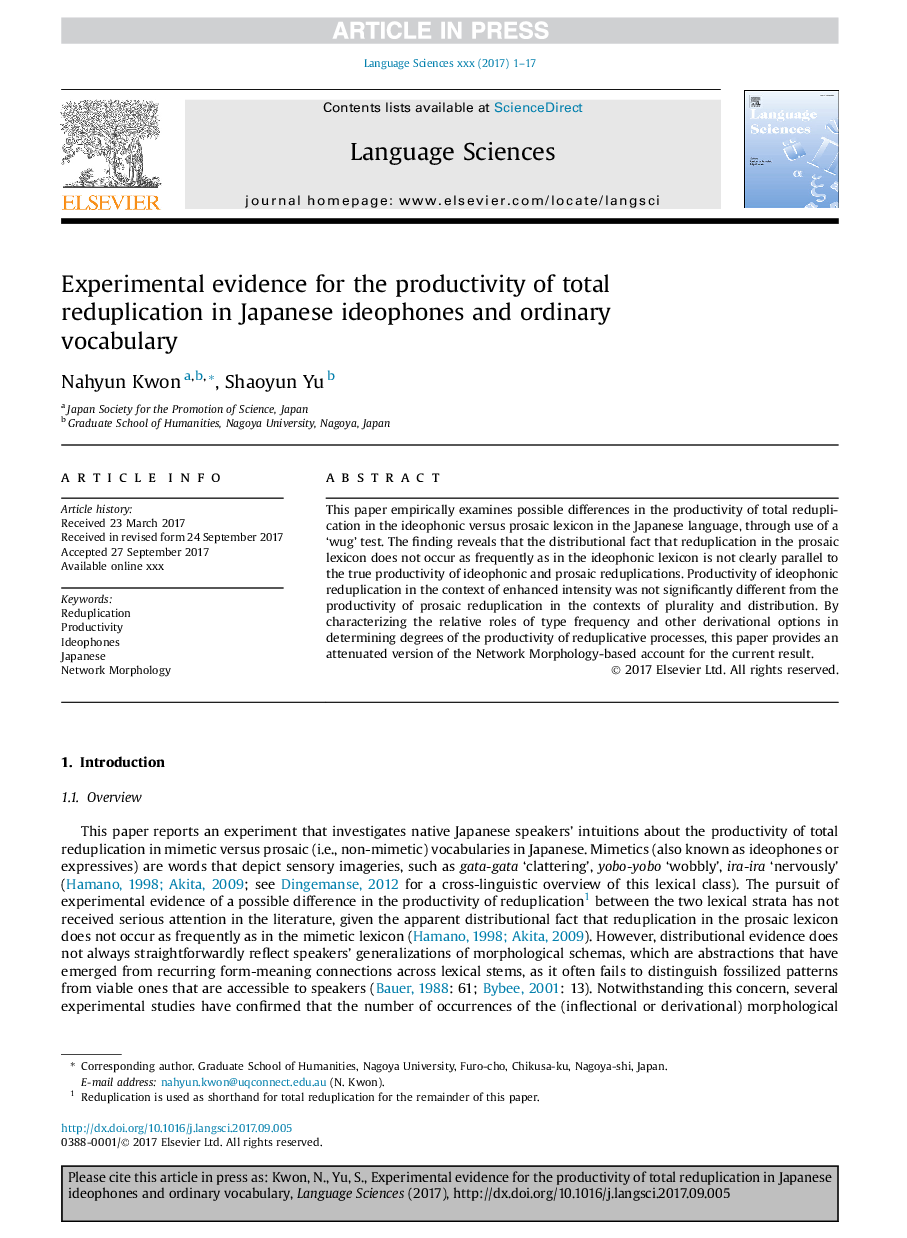| Article ID | Journal | Published Year | Pages | File Type |
|---|---|---|---|---|
| 7533830 | Language Sciences | 2018 | 17 Pages |
Abstract
This paper empirically examines possible differences in the productivity of total reduplication in the ideophonic versus prosaic lexicon in the Japanese language, through use of a 'wug' test. The finding reveals that the distributional fact that reduplication in the prosaic lexicon does not occur as frequently as in the ideophonic lexicon is not clearly parallel to the true productivity of ideophonic and prosaic reduplications. Productivity of ideophonic reduplication in the context of enhanced intensity was not significantly different from the productivity of prosaic reduplication in the contexts of plurality and distribution. By characterizing the relative roles of type frequency and other derivational options in determining degrees of the productivity of reduplicative processes, this paper provides an attenuated version of the Network Morphology-based account for the current result.
Keywords
Related Topics
Social Sciences and Humanities
Arts and Humanities
Language and Linguistics
Authors
Nahyun Kwon, Shaoyun Yu,
